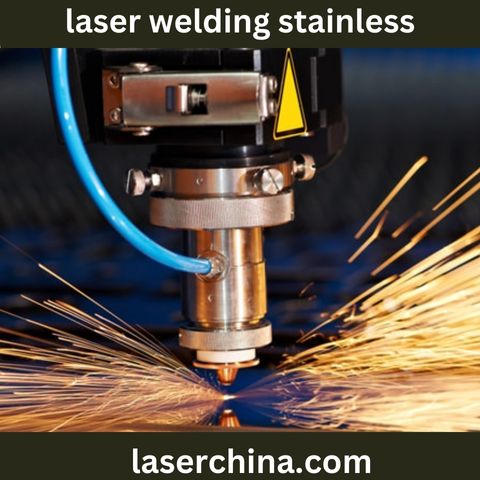In the world of metal fabrication, few tasks demand as much finesse and mastery as laser welding stainless steel. This process, although similar in concept to welding other metals, introduces complexities that separate skilled professionals from the rest. From the unique properties of stainless steel to the laser’s intense beam characteristics, every variable must be controlled with surgical precision to ensure flawless results. But what exactly makes laser welding stainless so demanding? Let’s explore the answer in detail, dissecting every layer of this intricate process.
Understanding the Nature of Stainless Steel
Before diving into the laser welding technique itself, it’s essential to understand the nature of the material being worked on. Stainless steel is not just a corrosion-resistant alloy—it’s a combination of iron, chromium (at least 10.5%), and other alloying elements like nickel and molybdenum. These elements provide high strength, resistance to oxidation, and an aesthetic finish that makes it desirable for industries ranging from aerospace and automotive to food processing and medical equipment.
However, this alloy’s very strengths introduce challenges. Stainless steel is prone to thermal expansion, distortion, and sensitization during welding. It also has low thermal conductivity, meaning that heat doesn’t dissipate easily. This creates localized heating during welding, which can lead to issues like warping or cracking if not properly managed.
The Precision Power of Laser Welding
Laser welding stands out because it uses a concentrated beam of light energy to fuse metal. Unlike traditional arc welding, which uses an electric arc and filler material, laser welding stainless steel relies on a high-intensity laser beam that melts the workpiece at the joint. This allows for deep, narrow welds with minimal heat-affected zones and excellent control.
Laser types used in stainless welding typically include:
-
Fiber Lasers: Highly efficient and capable of working on reflective materials.
-
Nd:YAG Lasers: Suitable for pulsed or continuous wave applications.
-
CO₂ Lasers: Less common for stainless, but still used in some industrial contexts.
Despite the technology’s power and precision, it doesn’t forgive errors. The same beam that creates clean welds can easily burn through or create porosity in stainless if the parameters aren’t perfectly dialed in.
Why Precision Matters in Laser Welding Stainless
The question posed earlier—why does laser welding stainless require such exacting control—can be answered by breaking down the following critical factors:
1. Heat Input Control
Stainless steel’s sensitivity to heat requires controlled energy input. Too much heat can cause:
-
Discoloration and loss of corrosion resistance
-
Warping due to uneven expansion and contraction
-
Sensitization, which leads to intergranular corrosion
Laser welding, though offering a high degree of control, can concentrate a large amount of energy in a tiny area. Maintaining optimal pulse duration, frequency, and travel speed is not optional—it’s mandatory.
2. Shielding Gas Strategy
Stainless reacts with oxygen and nitrogen in the atmosphere when heated. This is why shielding gas (usually argon or helium, or a mix) is used during laser welding. However, the effectiveness of shielding depends on:
-
Nozzle placement
-
Gas flow rate
-
Weld joint accessibility
Improper gas coverage can cause oxidation, porosity, and a rough, brittle weld seam. Precision here isn’t just about machine settings; it’s about the entire welding environment.
3. Joint Preparation
Unlike carbon steel, stainless steel demands immaculate surface conditions before welding. Any trace of:
-
Oil
-
Rust
-
Moisture
-
Paint
can alter the beam’s focus or cause weld defects. Laser welding does not tolerate dirt or gaps in the joint—it’s an exact science. Joint design also matters. V-grooves, square butt joints, and lap joints all behave differently under a laser. Fit-up tolerance needs to be tight—often within tenths of a millimeter.
Applications That Demand Perfection
Many industries that work with stainless steel operate under strict quality standards. That’s why laser welding stainless has become the method of choice in these sectors:
Medical Device Manufacturing
From surgical tools to implants, medical-grade stainless must be joined with zero contamination. Laser welding offers hermetic seals with low distortion, essential for biocompatibility.
Food Processing Equipment
Food-grade stainless steel must have smooth, clean welds to prevent bacterial growth. Laser welding ensures crevice-free joints.
Automotive and Aerospace
High-performance exhaust systems, engine components, and aircraft parts all use stainless steel. Lightweight, precise, and robust—laser welding delivers the quality needed for safety and performance.
Quality Assurance and Inspection
Because stainless steel welds are critical in so many applications, post-weld inspection is rigorous. Methods include:
-
Visual Inspection: Checking for color change, warping, and smoothness.
-
X-ray and Ultrasonic Testing: Looking for internal voids or cracks.
-
Dye Penetrant Inspection: Surface crack detection.
Again, precision during welding reduces the chance of failure during these tests. Rework costs time and money, so getting it right the first time is a hallmark of experienced fabricators.
Operator Skill and Automation
Laser welding might seem automated, but it requires deep operator understanding. Even with robotic systems, programming must consider:
-
Focus depth
-
Travel speed
-
Laser power
-
Gas coverage zones
-
Cooling cycles
Skilled technicians monitor real-time sensors and feedback systems to adapt to slight material inconsistencies. They are not just machine operators—they are process engineers ensuring integrity on every weld.
Maintenance of Equipment
Maintaining laser welding machines used on stainless steel is also critical. Dirty optics, worn lenses, or misaligned beams can turn a perfect weld into a failed one. Preventative maintenance includes:
-
Lens cleaning
-
Beam path alignment
-
Cooling system checks
-
Software calibration
Working with stainless is unforgiving, and equipment must be in top condition to ensure consistency.
Real-World Example: Pharmaceutical Facility Buildout
In one pharmaceutical production facility in Germany, stainless steel pipes were being welded using orbital laser systems. The goal: achieve bacteria-free, leak-proof joints. However, early in the process, several joints failed the inspection due to minor porosity. After analysis, it was discovered that shielding gas purity had dropped due to a faulty regulator.
Once corrected, and with welding parameters revalidated, the rejection rate dropped to zero. This real-life scenario proves how critical every element of control is in laser welding stainless—gas flow, equipment integrity, and human oversight.
Final Thoughts
Laser welding stainless steel isn’t just a process—it’s a discipline. Every detail, from gas composition to weld joint geometry, matters. The high-performance industries that rely on stainless demand nothing less than perfection, and laser welding delivers—if handled with knowledge and care. The process brings unmatched precision and speed, but only in the hands of professionals who understand the material’s complexities and respect the laser’s unforgiving accuracy. In the realm of modern manufacturing, mastering laser welding stainless is not optional—it’s essential.









